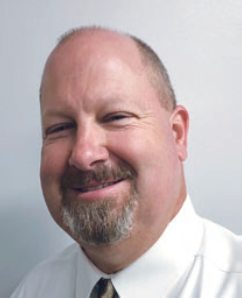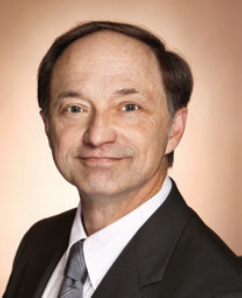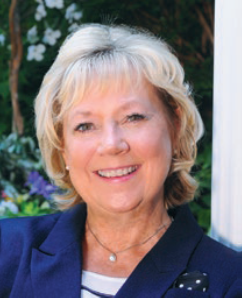Building a rural integrated network for specialty care
 Rob Schmitt, Gibson Area Hospital and Health Services CEO |
 Paul Skowron, Warner Hospital and Health Services CEO |
 Pat Schou, ICAHN executive director and 2020 NRHA president |
 Don Williams, Iroquois Memorial Hospital CEO |
Recruiting specialists is difficult for any hospital, and it’s even more challenging for small, independent hospitals in rural areas. Most critical access hospitals (CAHs) don’t have enough volume for full-time specialists in cardiology, pulmonology, orthopedics, urology, ear, nose and throat, and other specialties.
Smaller hospitals often rely on larger systems and bigger cities to provide specialty care. Patients may have to travel to receive care, or those systems may send specialists out to a rural hospital. “The challenge is that sometimes specialists coming from a larger system get pulled back for a greater need somewhere else in the system, so the coverage can be inconsistent,” says Rob Schmitt, CEO of Gibson Area Hospital and Health Services in Gibson City, Ill.
“It’s difficult to attract a specialist when there’s not enough volume and the payer mix isn’t good enough to make it worthwhile,” adds Paul Skowron, CEO of Warner Hospital and Health Services in nearby Clinton, Ill. Warner Hospital had struggled for years to retain an orthopedic specialist at their location, and Gibson Area Hospital was equipped with a large surgical suite but didn’t have enough volume to keep an orthopedic surgeon busy.
A win-win solution
Working together, the two CEOs found a mutually beneficial solution that helped both of their hospitals provide access to orthopedic care locally. “As one of the larger CAHs in the state, we thought Gibson Area Hospital could be a resource hospital for other CAHs, and we started recruiting specialists with this model in mind,” Schmitt explains. For the past two years, Gibson Area Hospital has sponsored an orthopedic specialist who sees patients in Gibson City and Clinton. Outpatient services and labs are done in both locations, with complex surgeries performed at Gibson Area Hospital.
Success with this orthopedic model inspired additional plans to share an ear, nose, and throat specialist and urologist among three rural hospitals in the area. Starting in November, these specialists will split their time between Gibson Area Hospital (three days/week), Warner Hospital (one day/week), and Iroquois Memorial Hospital (one day/week).
“As hospital leaders, it’s our responsibility to identify ways to meet the changing needs within our communities,” says Don Williams, Iroquois Memorial Hospital CEO.
“By working together to share specialists and keep those services local, we’re addressing a significant medical need in the community in a way that makes sense for us financially.”
Controlling costs in an ACO
All three hospitals are also in the Illinois Critical Access Hospital Network (ICAHN) accountable care organization (ACO), which helps reduce referrals out of network, builds local market share, and saves overall individual health care dollars. “It’s a triple win, because patients are seen in the local community, the bulk of care is provided in the local community, and together we can maximize the value of a specialist from a cost standpoint,” Schmitt says.
 “There’s value with a rural ACO because it encourages people to get their care locally with better care coordination, which helps control costs in the ACO. This helps hospitals to build market share and stay viable, while also helping to reduce individual health care costs,” says Pat Schou, ICAHN executive director and 2020 NRHA president.
“There’s value with a rural ACO because it encourages people to get their care locally with better care coordination, which helps control costs in the ACO. This helps hospitals to build market share and stay viable, while also helping to reduce individual health care costs,” says Pat Schou, ICAHN executive director and 2020 NRHA president.
Benefits for patients and the community
Patients who live in rural areas may already be conditioned to travel long distances to larger hospital systems for their care. But when given the opportunity to stay local or travel a shorter distance, the benefits are clear. Patients can get their specialty care close to home from a specialist they know and trust in their community.
The benefits of working together to keep specialty care locally at CAHs include:
- Providing better access to specialists.
- Keeping patients local with better coordination of care.
- Reducing the cost and burden of patient travel.
- Remaining independent and reducing out-of-network referrals to larger systems.
- Retaining health care dollars in the local community.
- Sharing the costs of physician services and marketing.
One of the keys to success with an arrangement between independent hospitals is striking a balance that helps each hospital keep aspects of specialty care local. “It’s a good balance, especially for the types of specialty care that we’re not able to offer here,” Skowron says.
Trends in CAH collaboration
“In order to navigate the challenges currently facing rural hospitals, we need examples of what others are doing across the country, whether that means forming alliances or other creative solutions,” Schou says. “I think we’ll continue to see more relationship building among hospitals as a strategy going forward.”
ICAHN provides opportunities for hospital leaders to partner with each other through the Trailblazer program. “Trailblazer roundtable meetings are designed to encourage outside-the-box thinking about new programs and services, as well as opportunities for sharing resources and finding collaborative solutions,” Schou says.
Trailblazer sessions helped launch the idea for sharing specialists among neighboring hospitals. “We started thinking about how to develop a better model that allows us to be independent and pick and choose specialists that provide the most benefit,” Skowron says.
Being open to new solutions can help communities build a sustainable future in rural health care. “It’s important to be honest about what you expect from the collaboration and willing to sit down and work things out,” Schmitt says.
Williams emphasizes the importance of building a level of trust among stakeholders and setting the tone for effective collaboration. “As executives we can share the vision, but it’s the teams in the hospitals who are working hard every day to carry out the plan logistically,” Williams says.
“The hardest part is making a decision to try something and knowing that it might not work out,” Skowron says. “Taking an informed risk and working through the challenges can help us better serve our communities in the long run.”
